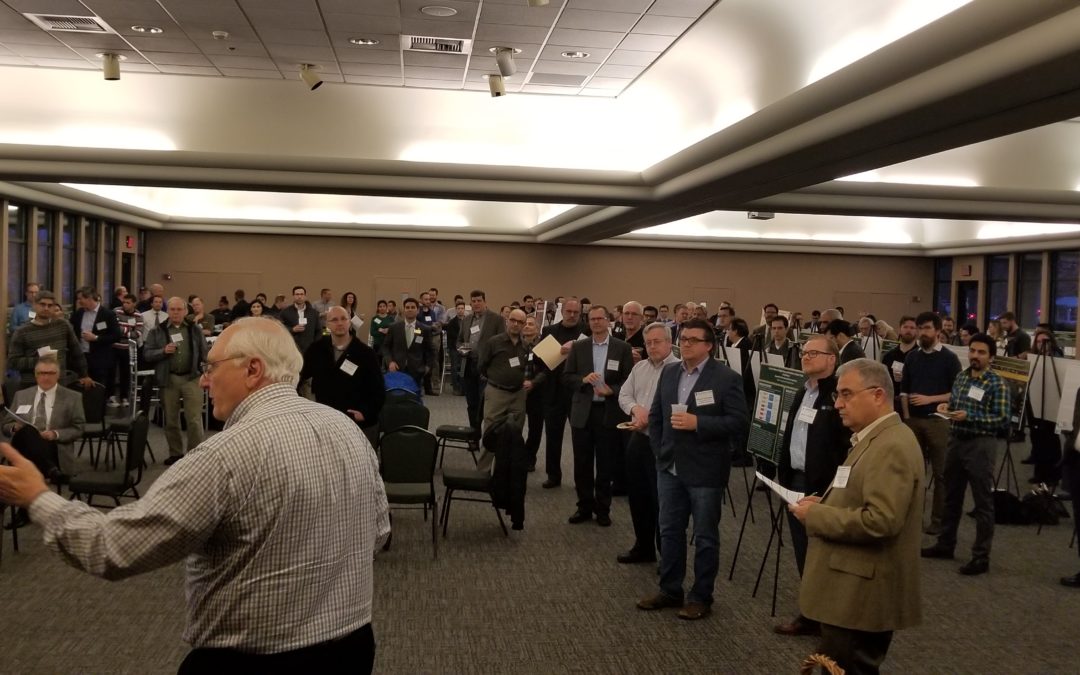On February 28 CleanStart had its first-ever combo event with an expo of research being conducted at Sac State by faculty of the Colleges of Engineering and Computer Science and of Natural Sciences and Mathematics. By our count there were over 40 posters on display with the faculty researchers there to explain them. About a dozen of the posters were on cleantech-related subjects. About 125 people had registered for the event and the room was crowded and lively.
We pulled three people out of the expo to a separate area to give more detailed presentations to our MeetUp participants. We leaned on our friend Steve Tourigny to describe his journey in building his career and then recruiting talent for the companies he has built here. He had advice for the students in the crowd on finding that first job in cleantech. One tip was in identifying who got funded and might be hiring. He also commented on the vast improvement in the region in being able both to recruit technical talent and in finding vendors to provide components for products startups want to manufacture. That’s great news for the region because both things make it easier to start and build companies here.
Prof. Roy Dixon talked about his research analyzing the quality and components of synthetic diesel and biodiesel. This work has helped fuel producers improve their products by tweaking their processes to avoid troublesome components. This was particularly true in helping local startup Greyrock Energy improve its synthetic diesel made from flared gas in wellfields–a great example of what collaborations between our universities and startups can achieve.
Professor Atousa Yazdani then presented her research on using piezoelectric crystals buried in roadways to produce usable amounts of electric power. These crystals (largely ceramics) convert mechanical stress into an electric pulse when squeezed. They are already used in sensors to measure strains on structures. But her application was to use them on a much larger scale. The idea is to use a stack of crystals buried under the concrete of a road to convert the pressure of cars and trucks rolling over them into usable electricity. The spikes (which reached 300 volts!) are accumulated in a capacitor or battery, and then fed as a relatively steady DC current into an inverter circuit to produce AC. By her calculations, 30 watts per square meter of roadway could be harvested per hour. In Israel, this technology has been installed on a significant scale. In this country, interest is only beginning. Working in collaboration with UC Merced, the next step will be installing a system on that campus to power lighting on a roadway and confirming the performance and economics.
For us, this event was a huge success. It was like a three-ring circus where people could always find something of interest. Our side event was packed to overflowing at times. We had many first-time attendees that wanted to come to future MeetUps. This is just what we want to keep building momentum behind cleantech regionally.

ABOUT THE AUTHOR
Gary Simon is the Chair of CleanStarts Board. A seasoned energy executive and entrepreneur with 45 years of experience in business, government, and non-profits.

